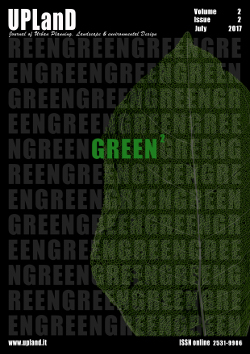Characteristics, Trends and Spatial Distribution of Urban Migration in Malaysia: A Case Study of the Klang Valley Region
Main Article Content
Abstract
This paper attempts to discuss the characteristics and spatial distribution of urban migrants in the Klang Valley region, Malaysia. The paper will first provide an overall picture about the urban migration scenarios and its influence on urban development. Then, it is followed by a discussion on the findings from a survey of migration behavioural in the Klang Valley region. The paper has found that most of the migrants in the areas of the Klang Valley came from outside the Klang Valley. They are dominated by a group of the 35-44 in age. Most of them are educated with a good job, have higher income and possess their own house. So, this age group influenced the characteristics of demographic and socioeconomic of the population in the Klang Valley. At the early stage of arrival, the Federal Territory of Kuala Lumpur (FTKL) became the concentration of urban migrants in the region, before they slowly phased out to the neighbouring areas such as the MPKj (the Kajang Municipal Council), MBSA (the Shah Alam City Council) and MPSJ (the Subang JayaMunicipal Council). This paper also illustrates the spatial distribution of urban migration in the Klang Valley based on the seven factors of migration decision-selectivity or destination choices. This paper ends with a discussion on how the urban planners should respond to the migration needs and issues for the betterment of urban development in the future.
Downloads
Article Details

This work is licensed under a Creative Commons Attribution-NonCommercial-NoDerivatives 4.0 International License.
Authors who publish with this journal agree to the following terms:- Authors retain copyright and grant the journal right of first publication with the work simultaneously licensed under a Creative Commons Attribution License that allows others to share the work with an acknowledgement of the work's authorship and initial publication in this journal.
- Authors are able to enter into separate, additional contractual arrangements for the non-exclusive distribution of the journal's published version of the work (e.g., post it to an institutional repository or publish it in a book), with an acknowledgement of its initial publication in this journal.
- Authors are permitted and encouraged to post their work online (e.g., in institutional repositories or on their website) prior to and during the submission process, as it can lead to productive exchanges, as well as earlier and greater citation of published work (See The Effect of Open Access).
References
Benea, P., Popp, I., & Rhoades, A. (2015). Commentary: Habitat III can help migration drive city development. http://citiscope.org/habitatIII/commentary/2016/01/habitat-iii-can-help-migration-drive-city-development
Caglar, A. (2014). Urban migration trends, challenges, responses and policy in Europe. World Migration Report, 2015. The university of Vienna, International Organization for Migration (IOM).
Clemens, M.A., Ozden, C., & Rapoport, H. (2014). Migration and development research is moving far beyond remittances. World Development 64, 121–124.
Cushing, B., & Poot, J. (2004). Crossing boundaries and borders: Regional science advances in migration modelling. Regional Science 83, 317-338.
Hugo, G. (2011). Future demographic change and its interactions with migration and climate change. Global Environmental Change 21, 21–33. doi:10.1016/j.gloenvcha.2011.09.008
Hugo, G. (2014). Urban migration trends, challenges, responses and policy in the Asia–Pacific. World Migration Report, 2015. The University of Adelaide, Australia, International Organization for Migration (IOM).
Lee, E.S. (1966). A theory of migration. Demography 3, 47-57.
Mohd Fadzil, A.R. (2010). Spatial modelling for distribution of migration potential in Klang Valley region. Unpublished PhD Thesis. Universiti Teknologi MARA (UiTM), Shah Alam.
Mohd Fadzil, A.R., Suharto, T., Wan Rabiah, W.O., & Mohd Roswodi, M.Z. (2016). Urban-to-urban migration in Malaysia: A case study of the East Coast Corridor Economic Region. Malaysian Journal of Society and Space 12(4), 131-146.
Mohd Fadzil, A.R. (2012). Migration behaviours as to gain the satisfaction in life: An empirical study. Proceeding of the 9th Regional Symposium of the Malay Archipelago. 11 & 12 December 2012, Universiti Teknologi MARA Cawangan Perak, Malaysia.
Mohd Fadzil, A.R., & Ishak, A.G. (2011). The importance of internal migration in the urban planning process: A case study of Klang Valley. International Journal of Social Planning and Development 1(1), 1-12.
Mohd Fadzil, A.R., Ishak, A.G., Ibrahim, N., & Suziana, M.Y. (2014). Evaluation of migration-decision selectivity factors in the metropolitan area: A case study in Klang Valley Malaysia. Journal of Social Sciences and Humanities (e-Bangi) 9(1), 034-044.
Plane, D.A., & Rogerson, P.A. (1994). The geographical analysis of population with application to planning and business. New York: John Wiley & Sons, Inc.
Sgobbo, A., & Moccia, F. D. (2016). Synergetic Temporary Use for the Enhancement of Historic Centers: The Pilot Project for the Naples Waterfront. TECHNE Journal of Technology for Architecture and Environment, 12, 253-260. doi: 10.13128/Techne-19360
Skeldon, R. (2002). Migration and poverty. Asia-Pacific Population 17(4), 67-82.
Tacoli, C., McGranahan, C., & Satterthwaite, D. (2015). Urbanisation, rural–urban migration and urban poverty. Working paper, London, IED.
Zhang, X. Q. (2016). The trends, promises and challenges of urbanization in the world. Habitat International 54 (2016), 241-252. doi:10.1016/j.habitatint.2015.11.018

